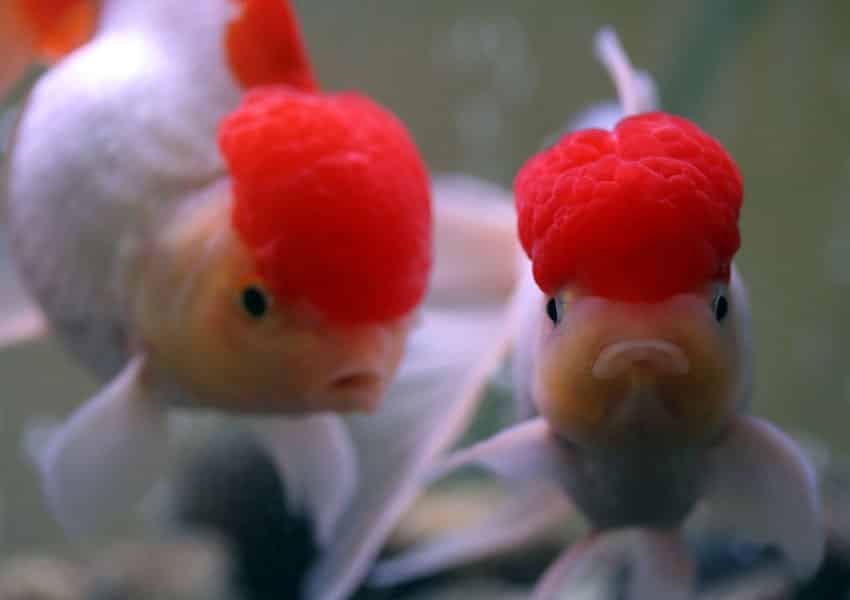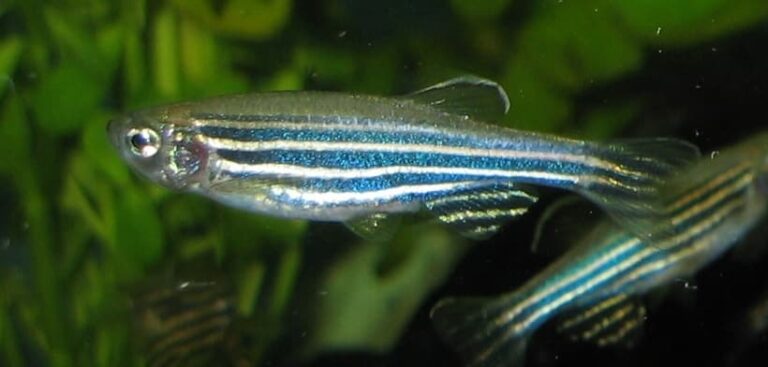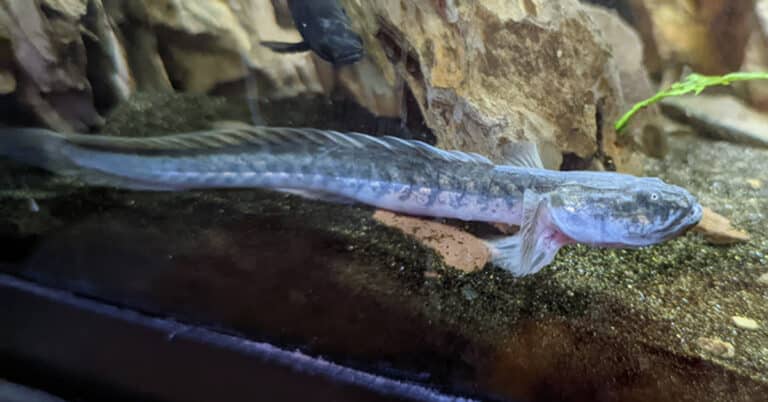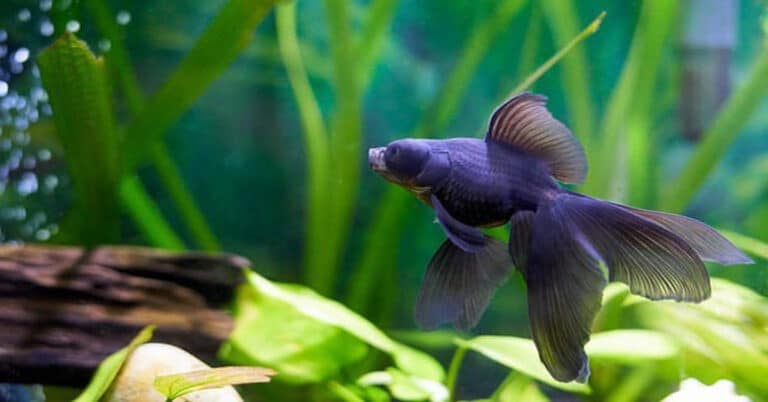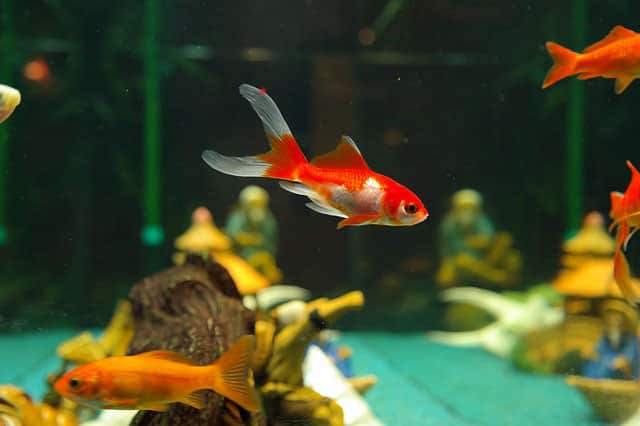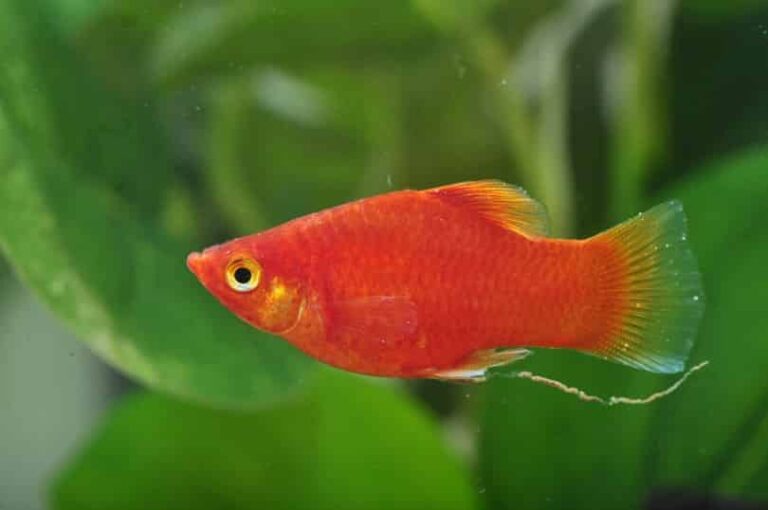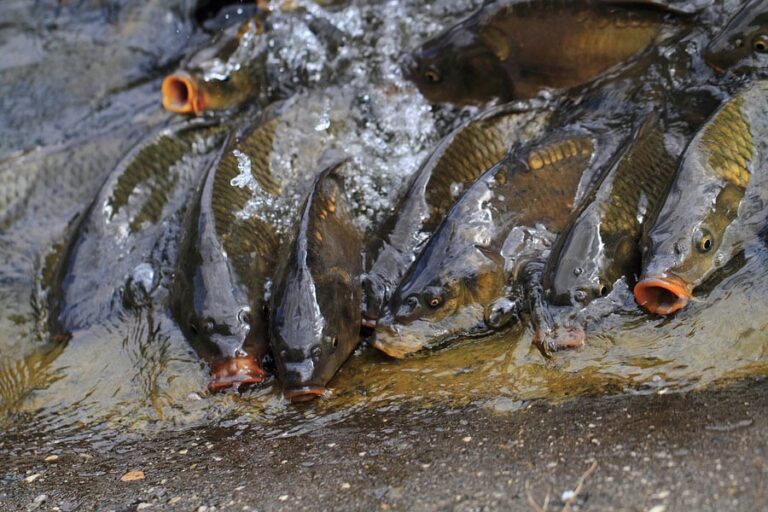Oranda Goldfish
The Oranda Goldfish is a type of Goldfish, belonging to the Carp family. The main distinguishing feature that distinguishes this fish from the common Goldfish is the hood, which is present on the Oranda fish head. This head growth is also termed “wen”, and it sometimes covers the whole head except the mouth. These fish have grown popular among fish hobbyists due to their unique head growth and vibrant colorful body.
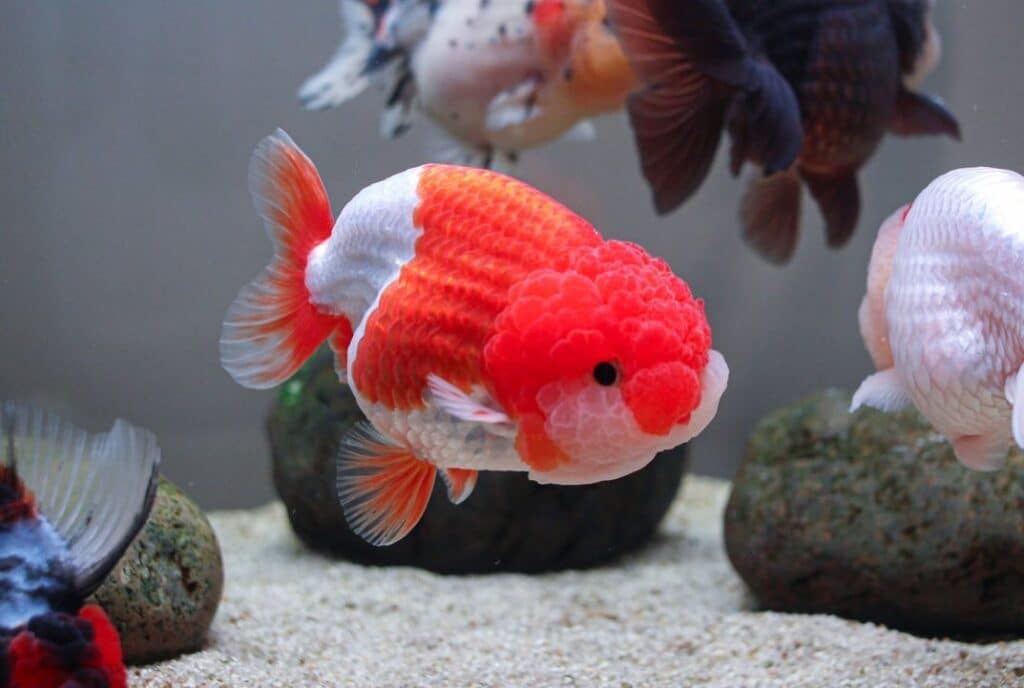
Description
The Oranda Goldfish grows up to 8 to 12 inches in body length. They have an egg-shaped wide body that can be seen in varieties of color combinations like red and white, white and black, white and red, plain black, bronze, chocolate, blue and calico. They possess a metallic or matte textured scales. At birth, these fish have normal heads, but after 6 months the head starts to bulge. In a young juvenile, it takes about 2 years for the full growth of the hood. Sometimes this hood grows very large, covering the goldfish’s eyes. This hinders the eyesight, and sometimes causes blindness. This part is very sensitive and needs extra care or it may be affected by bacterial infections. This species possesses paired fins except the dorsal fins. The Oranda’s split caudal fins are long flowing, beautiful tail fins that fans when the fish stops swimming.
Types
The Oranda Goldfish is found in many types that have some similar features and a few differences. Some of the types areas given below:
Panda Oranda Goldfish
This unique type is just a color variation of the regular Oranda Goldfish. They can be distinguished from the others by their stunning black and white color combination. The other amazing feature of the Panda Oranda Goldfish is its veiled long tail. These special features have entitled this fish to be the representative of the Goldfish species of China.
Red Cap Oranda
This is another variety of Goldfish. As the name suggests, these fish have a bright red colored hood over the head similar to a cap, or more like an exposed brain. They have a metallic scaled white colored body. The red and white combination of this Oranda’s body looks fabulous. They are very popular in America
Azuma Nishiki
The other synonym for this fish is the Calico Oranda. They are attractive with a unique type of body scales that are neither transparent nor metallic in appearance.
Telescope Eyed Oranda
This fish is developed in China by crossbreeding the Oranda Goldfish and the Telescope eye fish. The other features are similar to the common Oranda.
Hana Fusa
The other synonym for this type of fish is the Pompom Oranda. They have very similar features to that of a common Oranda, but also possess nasal bouquets similar to the Pompom Goldfish.
Nagate Oranda
This fish also exhibits similar features of an Oranda. But it has a long body, and is developed in the southwest region of Japan, known as Shikoku.
Tigerhead Oranda
These types of Oranda have the hood fully grown over the face, resembling a lion’s head. They possess dorsal fins, and the remaining features are similar to the Oranda. This type of fish first appeared in the late 17th century. They are very uncommon in America, compared to the other types.
Goose Head Oranda
This type of Oranda has a hood that grows very tall instead of growing across the face. It extends away from the skull. The remaining features are similar to the original Oranda.
Reproduction
The Oranda Goldfish are actually easy to breed, but only during the breeding season. Otherwise, it is a very difficult task. The male and the female can be distinguished by their body size. The male fish is more slender and smaller, compared to the female Oranda Goldfish. During the breeding period, the male fish display many white dots all over the head. These white dots are known as ‘breeding tubercles’, and is often mistaken to be suffering from ich disease. They undergo many courtship rituals, like the male fish chasing the female, touching or nudging the belly of the female and encouraging her to lay eggs. The low-temperature period, which is followed by increasing temperature at a slower pace, induces these fish to spawn. The female Oranda can lay more than 1000 eggs in a single spawn, but a very few percentage of eggs survives. As soon as the female fish lays eggs, the male fish fertilizes the eggs by spraying a substance called “milt” from their body. It takes around 5 to 6 days for the eggs to hatch. These small fry should be provided small pieces of prepared foods or live foods, usually given to the egg-laying female fish.
Oranda Goldfish at Home
Food
A variety of foods can be included in the Oranda Goldfish’s diet that will provide all the nutrients required. It should not be given only a single type of food; instead you should introduce varieties in their daily diet. Some of the commercial foods available for these fish are flakes and pellets. Salad, peas, cocktail shrimp, krill, brine shrimp, frozen bloodworm, daphnia, lettuce are the other items that can be included in their diet. Many fish owners prepare a gel food for their fish on their own, because the Oranda Goldfish are prone to swim bladder diseases, if fed with the wrong types of food like un-soaked pellets or high protein foods.
Water
Every fish needs a suitable environment to survive. While breeding at home, provide them an environment similar to their natural habitat. The water conditions should be apt for them to survive. You will have to arrange for a liquid test to regularly check the level of nitrates, nitrites and ammonia. The nitrite and ammonia should be 0 and the level of nitrate should be less than 20. The other levels like pH, hardness and temperature should also be checked regularly. The pH level should be between 6.5 and 7.5, and the temperature should be at least 65 to 75 degree F. The hardness range should be between 5 and 19 DGH. You should change up to 30 to 50 % of the water, once in a week. If you change the whole water, the fish will be disturbed due to the new water condition, and the helpful bacteria that break down the waste will be eradicated along with the old water.
Tank
Along with the water condition, the tank requirements are also important to ensure a suitable living place for the Oranda Goldfish. These fish should be placed in a 20 to 30 gallon tank, which have a rectangular shape. They prefer a tank that provides enough space to swim. A filter is an essential part of Goldfish aquarium, as these species produce a lot of waste. They are too sensitive, and are susceptible to temperature shock, if the temperature dips or increases; so heaters are also important to maintain the water temperature. The suitable substrate for these fish is the medium sized gravel which will impart a natural look. You can also add some decoration items like hardy plants, shells, corals, pebbles, castles and wood pieces.

Having discovered a fondness for insects while pursuing her degree in Biology, Randi Jones was quite bugged to know that people usually dismissed these little creatures as “creepy-crawlies”.

